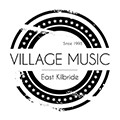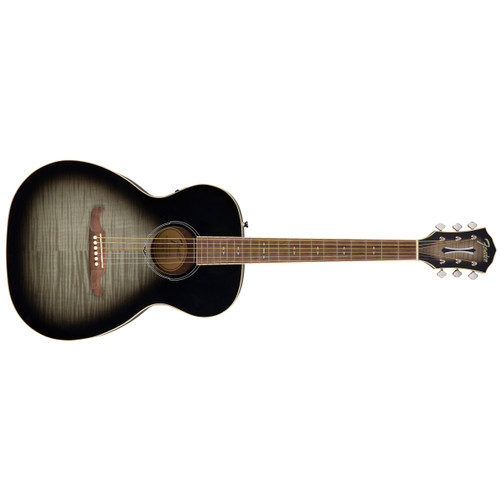2003 Prestige Elite Hollowbody (Limited Edition / Prototype)
Prestige Guitars, based in Vancouver, Canada, was still in its formative years in 2003. The Elite Hollowbody was among their first high-end models, blending jazzbox craftsmanship with modern boutique aesthetics.
This particular guitar is completely unique, being one of only six pre-production models created to test various finishes — with this specific finish never entering production. As a prototype featuring a non-standard colour, it is especially rare and was likely built with an exceptional level of attention to detail.
Specifications
Note: Specifics may vary slightly are this is a pre-production prototype.
Body:
-
Construction: Hollow with centre block
-
Top: Carved Canadian maple
-
Back and sides: Flame maple or mahogany
-
Binding: Multi-ply binding on top, back, and f-holes
-
Finish: Gloss polyurethane or early nitro hybrid – this prototype’s colour not being standard suggests a custom shop approach
Neck:
-
Wood: Mahogany or maple (set neck)
-
Profile: Medium “C” shape – fast but substantial
-
Scale length: 24.75"
-
Fingerboard: Rosewood
-
Inlays: Abalone
-
Frets: Medium-jumbo
-
Headstock: Bound with the early Prestige logo
Electronics:
-
Pickups: Seymour Duncan '59
-
Controls: 2 x volume, 2 x tone, 3-way toggle switch
Hardware:
-
Tuners: Gotoh, with keystone buttons
-
Hardware finish: Gold
The Condition
This guitar has been regularly played and occasionally gigged but always carefully looked after over it's 22 years, some of the gold hardware shows some very slight signs of fading, and there some swirl marks in the gloss where the guitar has been delicately polished. However the frets are in perfect condition, there are no bumps, dings or gouges, no belt rash on the back, and no previous repairs or modifications.
As with all our second hand guitars it's been restrung with Elixir 10-46 strings, and professionally set up by our in-store tech, given a light fret dress and polish, and set for a low comfortable playing action and correct intonation.
Also includes Hard Case.
? Build Quality (2003 Era)
Prestige was founded with the aim of bringing Canadian luthiery excellence to boutique guitar building, and early 2000s models were particularly well crafted, as each one was effectively a small-batch or custom-shop build.
Key Traits:
-
Fit and finish: Exceptional, particularly for hollowbody guitars, which require careful top carving and neck setting.
-
Attention to detail: Early prototypes often had more hand-work – binding, inlay, and fret dressing were done meticulously.
-
Tonewoods: The 2003 era often featured locally sourced Canadian woods, including maple from British Columbia forests, selected for tonal resonance.
-
Electronics quality: Wiring was hand-soldered, and shielding was clean — resulting in lower noise compared to some mass-market equivalents.
These guitars rivalled similar offerings from Heritage, Collings, or even Gibson Custom Shop in terms of craftsmanship, despite Prestige still being a young brand.
?️ Reception in 2003
Reviewers:
-
Early reviews in boutique guitar publications (like 20th Century Guitar and regional North American press) praised Prestige for “delivering Custom Shop build at a fraction of the price.”
-
The Elite Hollowbody was highlighted for:
-
A rich, rounded jazz/blues tone
-
Clean acoustic resonance even when unplugged
-
High sustain for a fully hollow guitar
-
However, because Prestige had limited distribution in 2003, many mainstream reviewers didn’t cover the brand until later years.
Players:
-
Gigging jazz/blues musicians appreciated the neck comfort, resonance, and lack of feedback at medium stage volumes.
-
Some session players picked them up for their recording warmth — the pickups were often said to be “voiced with clarity and vintage push.”
-
Collectors and guitar forums (e.g., The Gear Page) occasionally reference early Prestiges as “hidden gems” of the early 2000s boutique scene.
? Legacy and Rarity
This guitar — a prototype or limited colour edition from 2003 — holds particular historical and collector’s value.
Legacy Highlights:
-
2003 models represent the very first Prestige workshop years — made before the company scaled up production.
-
Non-standard colours or finishes on these early models often indicate:
-
Custom orders
-
Pre-NAMM prototypes
-
Luthier-specific experiments (e.g., different neck angles, wiring paths, or tops)
-
-
Later iterations of the Elite series lost some of this unique luthiery detail as the line was streamlined.
Current Status (as of 2025):
-
Guitars from Prestige’s first 2–3 years, particularly limited or prototype models, are increasingly sought after by boutique collectors.
- Prestige Guitars has since built a solid reputation internationally, adding to early models’ desirability.














